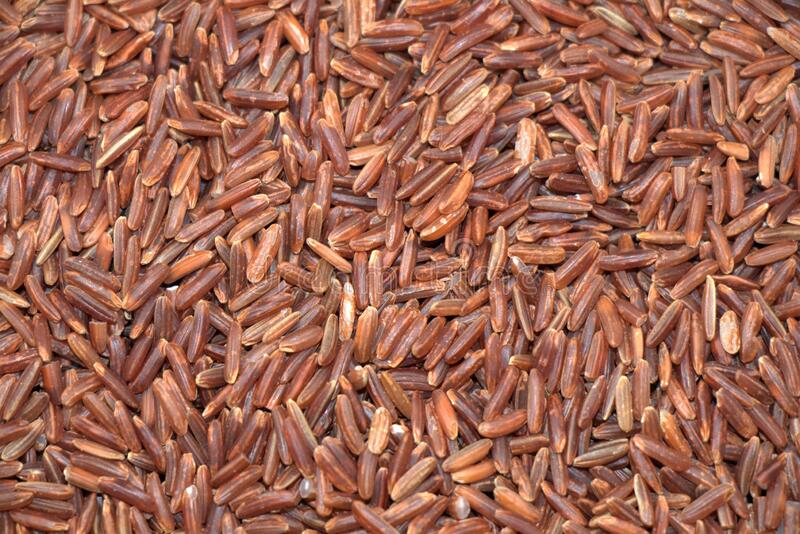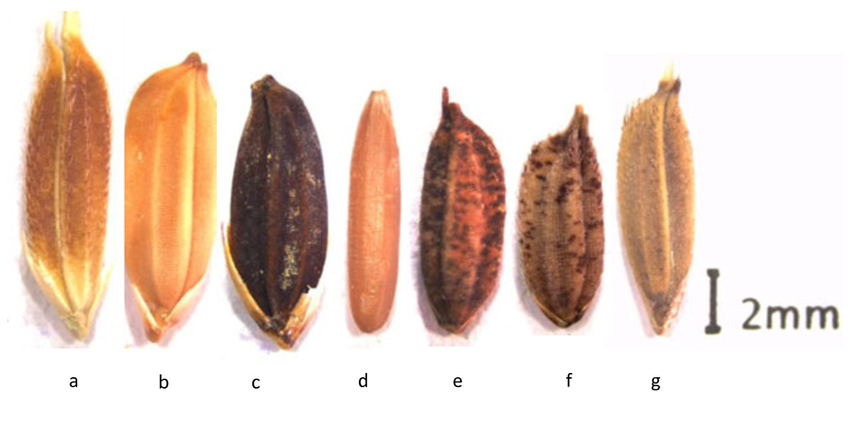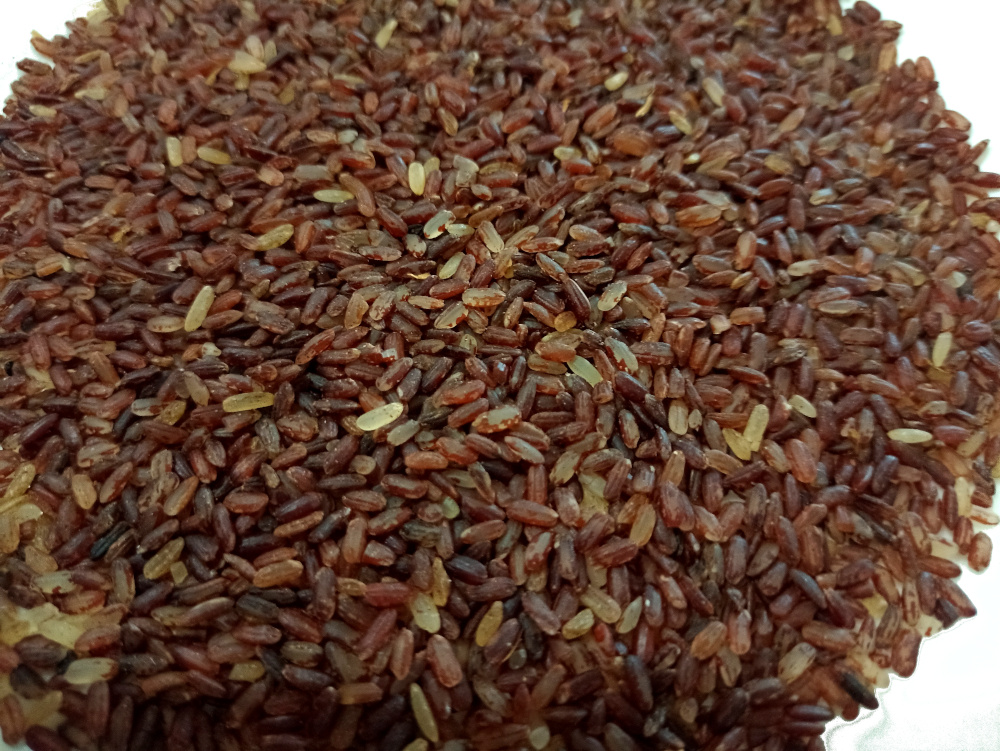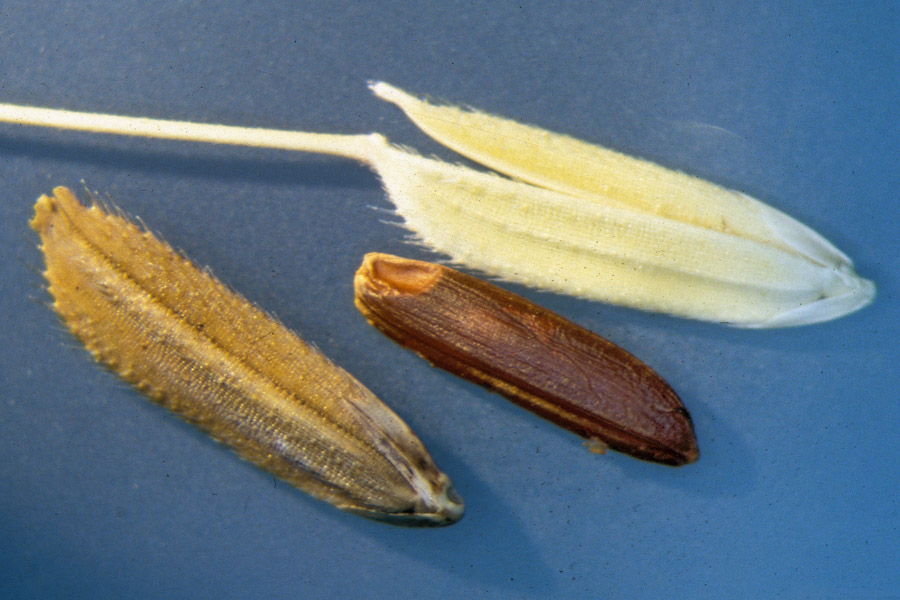What is the African wild rice?
African Wild Rice, also known as Oryza longistaminata, is a species of wild rice native to Africa. It is an annual grass that typically grows in swampy areas, riverbanks, and other wetland habitats across various African countries, including Cameroon, Nigeria, Ethiopia, and Sudan.
African Wild Rice is an important crop for African farmers and is a key source of food for many communities. It is highly nutritious and rich in vitamins, and minerals. It is also drought-tolerant and can grow in a variety of soil types.
The rice grains of African Wild Rice are small and red-brown in colour. They have a nutty flavour and a slightly chewy texture. In traditional African cuisine, the rice is often cooked with vegetables, meat, or spices, and is used to make porridge, puddings, and other dishes.
African Wild Rice is also an important genetic resource for rice breeding programmes. It has been used to develop new varieties of rice that are more resistant to pests and diseases, as well as more tolerant to drought and other environmental stresses.

What are the benefits of the African wild rice over other species of rice?
African Wild Rice (Oryza longistaminata) has several benefits over other species of rice, including:
- Nutritional value: African Wild Rice is highly nutritious and rich in vitamins and minerals. It contains higher levels of iron, zinc, and other essential micronutrients compared to other rice varieties. This makes it an important crop for improving the nutritional status of people in many parts of Africa.
- Climate resilience: African Wild Rice is more resilient to drought and other environmental stresses than other rice varieties. This is due to its ability to grow in a variety of soil types and its deep root system, which enables it to access water and nutrients in dry conditions.
- Disease resistance: African Wild Rice is resistant to several rice diseases such as blast and bacterial leaf blight.
- Genetic diversity: African Wild Rice has a high level of genetic diversity, which makes it a target for rice breeding programmes. Its genetic diversity can be used to develop new rice varieties with traits such as high yield potential, pest and disease resistance, and tolerance to environmental stresses.
- Cultural significance: African Wild Rice has cultural and traditional significance in many parts of Africa. It is an important crop in many communities and is used to make a variety of dishes such as porridge, puddings, and stews.
Overall, African Wild Rice is an important crop for improving food security and livelihoods in many parts of Africa.

How many types or species of African wild rice are there?
Even though when people refer to African Wild Rice they are often talking about the Oryza longistaminata species, there are in fact several other species of African Wild Rice that are found in different parts in of the African continent. Some species that are native to Africa include the following:
- Oryza longistaminata: This is the most common and widely distributed species of African Wild Rice. It is found in various African countries, including Cameroon, Nigeria, and Sudan.
- Oryza barthii: This species of wild rice is found in West and Central Africa, including countries such as Senegal, Mali, and Ghana.
- Oryza punctata: This species of wild rice is found in East and Central Africa, including countries such as Ethiopia, Uganda, and Tanzania.
- Oryza breviligulata: This species of wild rice is found in East and Southern Africa, including countries such as Zimbabwe and Mozambique.
- Oryza glaberrima: This is a domesticated rice species that is believed to have originated in West Africa. It is closely related to African Wild Rice and is still grown in some parts of West Africa.
These wild rice species are often used for rice breeding programmes and have contributed to the development of new rice varieties.

What other species of rice have been developed from the African wild rice?
African Wild Rice (Oryza longistaminata) has been used as a genetic resource to develop several rice varieties. Here are a few examples:
- New Rice for Africa (NERICA): This is a group of rice varieties developed by the Africa Rice Center (formerly known as WARDA). NERICA rice was created by crossing the African Wild Rice with Asian rice varieties to create rice plants with traits such as drought tolerance, high yield potential, and resistance to pests and diseases.
- Nerica-L: This is a NERICA rice variety that was developed specifically for lowland rice-growing environments. This is believed to provide high yield potential, good grain quality, and is resistant to major rice diseases such as blast and bacterial leaf blight.
- TOS 1458: This is a rice variety developed by the Institute of Agricultural Research for Development (IRAD) in Cameroon. It was developed by crossing African Wild Rice with an Asian rice variety, and it is said to show high resistant to several rice diseases such as blast and sheath blight.
- WAB56-104: This is a rice variety developed by the West Africa Rice Development Association (WARDA). It was created by crossing an African Wild Rice variety with an upland rice variety. WAB56-104 is said to be resistant to rice blast disease and has high yield potential.
Overall, African Wild Rice has been a genetic resource for rice breeding programmes in Africa and has contributed to the development of new rice varieties in many parts of Africa.
Have the African wild rice species benefits been researched?
Research has been conducted on the benefits and potential uses of several African Wild Rice species besides Oryza longistaminata.
For example, Oryza glaberrima, a domesticated rice species that is closely related to African Wild Rice, has been shown to have high levels of resistance to several rice diseases, including rice blast and sheath blight. It is also more tolerant to drought and low soil fertility compared to some other rice varieties.
Oryza barthii, another species of African Wild Rice, has been studied for its potential use in rice breeding programmes. It has been found to have desirable traits such as high levels of genetic diversity, resistance to pests and diseases, and tolerance to environmental stresses.
Oryza punctata, a species of wild rice found in East and Central Africa, has been shown to have potential use in rice breeding programmes for its resistance to rice blast and other rice diseases.
Overall, there is a growing body of research on the benefits and potential uses of different African Wild Rice species. These studies are however focused on using the African wild rice to develop hybrid and genetically engineered species helping to create new rice varieties with ‘so-called’ desirable traits such as disease resistance, climate resilience, and improved nutritional value.
What period during the year do the African wild rice grow?
The growth period for African Wild Rice (Oryza longistaminata) varies depending on the specific location and environmental conditions. In general, African Wild Rice is a warm-season crop that grows during the rainy season and is dormant during the dry season.
The exact timing of the growth period for African Wild Rice depends on the rainfall patterns in a particular region. In areas with a single rainy season, the crop is usually planted at the onset of the rains and grows throughout the season, which can last from a few months to several months. In areas with two rainy seasons, the crop may be planted during either season.
In some areas, African Wild Rice can grow year-round if there is sufficient moisture and temperatures are warm enough. However, in many areas, the crop is only grown during the rainy season when conditions are suitable for growth.
Overall, the growth period for African Wild Rice is closely tied to the seasonal weather patterns in a particular region, and the crop is typically grown during the rainy season when there is enough moisture to support its growth.
What are the nutritional values of the African wild rice species?
African Wild Rice (Oryza longistaminata) and other wild rice species native to Africa are highly nutritious and contain a variety of essential vitamins, minerals, and other nutrients. Here are some of the nutritional values of African Wild Rice:
- Macronutrients: African Wild Rice is a good source of carbohydrates and provides about 75-80% of calories from carbohydrates. It also contains some ‘protein’, with around 6-7% of its weight being protein. However, the protein content can vary depending on the specific variety and growing conditions.
- Micronutrients: African Wild Rice is rich in micronutrients such as iron, zinc, and calcium. For example, one study found that African Wild Rice had higher levels of iron and zinc than other rice varieties. It also contains other essential micronutrients, such as magnesium, potassium, and phosphorus.
- Antioxidants: African Wild Rice is high in antioxidants, which can help protect the body against damage from harmful free radicals. One study found that African Wild Rice had higher levels of antioxidants than other rice varieties.
- Fibre: African Wild Rice is a good source of dietary fibre, which can help improve digestive health and prevent constipation.
- Low in fat: African Wild Rice is naturally low in fat, with less than 1% of its weight being fat.
Overall, African Wild Rice is a nutritious food that is rich in essential vitamins, minerals, and other nutrients. Its high levels of micronutrients and antioxidants make it a valuable crop for improving the nutritional status of people in many parts of Africa.
What are some African wild rice recipes?
African Wild Rice (Oryza longistaminata) is a versatile ingredient that can be used in a variety of dishes. Here are a few recipes that feature African Wild Rice:
- African Wild Rice and Vegetable Stew: This hearty stew is made with a variety of vegetables, including onions, tomatoes, and eggplant, and flavoured with cumin and coriander. The African Wild Rice adds a nutty flavour and provides a source of carbohydrates and fibre.
- African Wild Rice Salad: This refreshing salad is made with cooked African Wild Rice, bell peppers, cherry tomatoes, and a simple vinaigrette dressing. It’s a great side dish for summer barbecues or potlucks.
These are just a few examples of the many ways that African Wild Rice can be used in cooking. Its nutty flavour and nutritional benefits make it a great ingredient for a variety of dishes.
The Africa Wild Rice is used to refer to several wild species of rice found throughout the continent. These rice in the past and even today are used to create different species of rice, as well as, they have been hybridised or merged with other species to create new species. The original wild rice are however still eaten by local people and can be found at the local markets. An effort however must be made to increase the awareness of the original African Wild Rice species, with the understanding that these wild rice are indeed superior to genetically engineered, hybrid or other imported species of rice, and therefore, in comparison, are more beneficial .for consumption.
References
- Information on African wild rice species:
- Vaughan, D. A., & Morishima, H. (2003). Wild relatives of rice: a valuable genetic resource for genomics and breeding. In Advances in Agronomy (Vol. 78, pp. 1-45). Academic Press.
- Ge, S., Sang, T., Lu, B.-R., & Hong, D.-Y. (1999). Phylogeny of rice genomes with emphasis on origins of allotetraploid species. Proceedings of the National Academy of Sciences, 96(25), 14400-14405.
- Nutritional value of African wild rice:
- Bressani, R., & Elias, L. G. (1975). Nutritional potential of wild rice species. Journal of Agricultural and Food Chemistry, 23(3), 451-453.
- Vitale, M., & Cerone, S. I. (2019). Nutritional and technological characterization of African wild rice (Oryza longistaminata) for potential exploitation in food industry. Italian Journal of Food Science, 31(4), 781-794.
- Recipes using African wild rice:
- Okafor, P. N., & Okoli, E. C. (2012). A review of the nutritional composition and utilisation of wild rice (Oryza spp.) in Nigeria. International Journal of Food Science and Nutrition Engineering, 2(2), 7-15.
- Mushagalusa, N. D., Achu, M. B., Mbofung, C. M., & Ndjouenkeu, R. (2008). Physicochemical, functional, and pasting properties of flours obtained from four varieties of African rice (Oryza glaberrima Steud.) and two varieties of Asian rice (Oryza sativa L.). Journal of Food Science, 73(8), S373-S379.
- Zizania africana and Echinochloa colona:
- Ndam, N. J., & Zapfack, L. (2016). Wild rice (Zizania spp.): an emerging African crop with potential for income generation and poverty alleviation. Scientific African, 3, e00044.
- Elansary, H. O., Szopa, A., Kubica, P., & Al-Mana, F. A. (2019). Zizania latifolia (Griseb.) Turcz.: A potential candidate for future crops with nutritional and pharmaceutical values. Agriculture, 9(12), 270.
This article is copyrighted by Ital is Vital, 2025. Want to re-post this article? Visit our guidelines.
DISCLAIMER: THIS WEBSITE DOES NOT PROVIDE MEDICAL ADVICE
The information, including but not limited to, text, graphics, images and other material contained on this website are for informational purposes only. The purpose of this website is to promote broad consumer understanding and knowledge of various health topics. It is not intended to be a substitute for professional medical advice, diagnosis or treatment. Always seek the advice of your physician or other qualified health care provider with any questions you may have regarding a medical condition or treatment and before undertaking a new health care regimen, and never disregard professional medical advice or delay in seeking it because of something you have read on this website.
